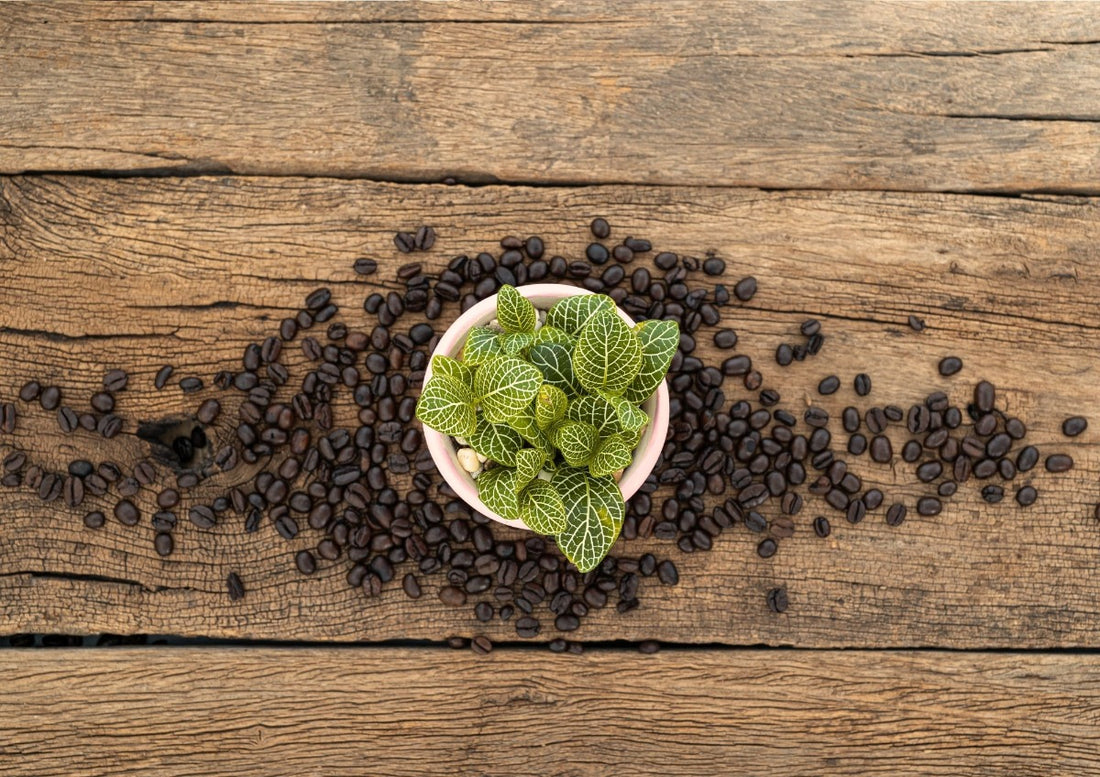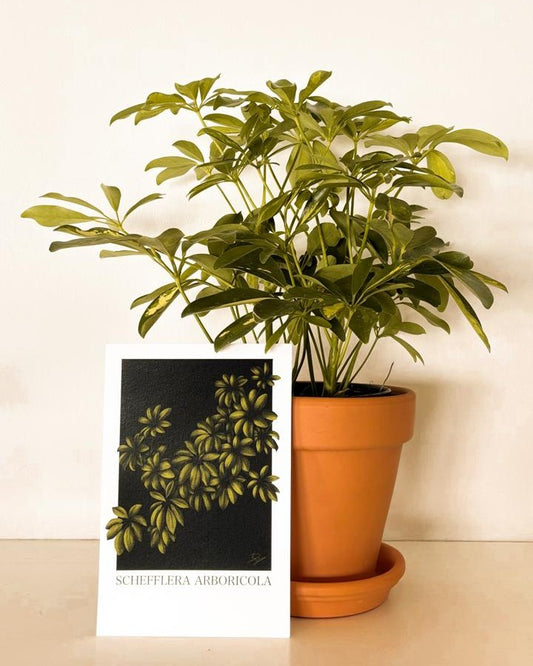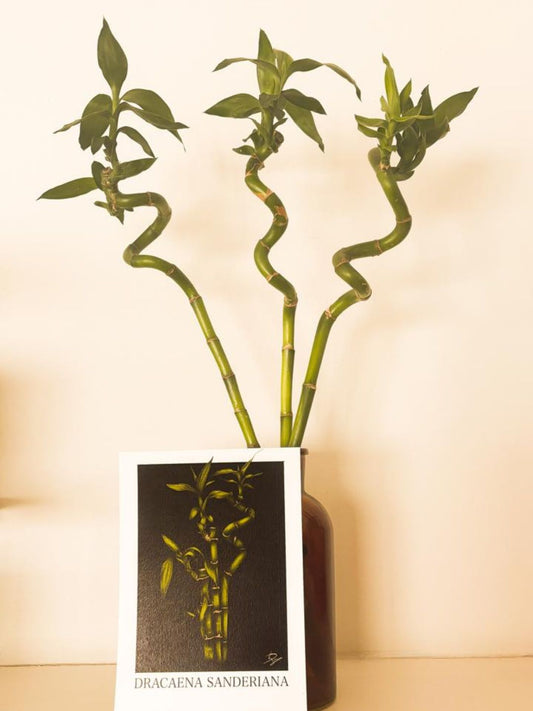Chances are that, whether you're a houseplant expert or a beginner, you’ve heard rumors about using coffee grounds for houseplants as fertilizer. In this blog post, we’ll explore whether coffee grounds truly benefit your plants' vitality, delve into the science behind their effects, and provide practical tips on how to use coffee grounds for houseplants and which plants benefit most. Or is it all just an old wives' tale with no merit whatsoever? Let’s uncover the truth and see if coffee grounds deserve a spot in your plant care routine.
Throughout this blog post, whenever "coffee grounds" are mentioned, please assume I am referring to used coffee grounds. Using freshly ground coffee for your plants would be wasteful and potentially harmful, as fresh coffee grounds are far too acidic for most houseplants.
The Science Behind Coffee Grounds for Houseplants

Using coffee grounds for houseplants as a fertilizer has become a popular practice among plant enthusiasts and savvy DIYers, but what’s the real deal behind this organic addition? Let's dive into the science to understand how coffee grounds can potentially benefit your indoor greenery.
Nutrient Profile of Coffee Grounds for Houseplants
Coffee grounds are rich in several key nutrients (N-P-K ratio) that plants need to thrive. They contain:
Nitrogen (N): Essential for leafy growth and overall plant health, nitrogen helps plants produce the energy they need to grow.
Phosphorus (P): Vital for root development and flowering, phosphorus supports the transfer of energy within the plant.
Potassium (K): Important for overall plant function, including water regulation and disease resistance.
In addition to these primary nutrients, coffee grounds also offer small amounts of other minerals such as magnesium, calcium, and trace elements which contribute to the overall well-being of your plants.
Acidic Properties and Soil pH
One common concern about using coffee grounds for houseplants is their acidity. Fresh coffee grounds are indeed acidic, which can lower the pH of your soil. This is beneficial for acid-loving plants like calatheas, peace lilies, philodendron, and certain types of ferns. However, as coffee grounds decompose, their pH level neutralizes, making them suitable for most plants.
Organic Matter and Soil Structure
Adding coffee grounds to your soil also improves its structure. Coffee grounds for houseplants help create an earthy texture, which enhances soil aeration and water retention. This is particularly useful for potted plants, where dense, compact soil are usually the cause of issues such as root rot.
Microbial Activity and Soil Health
Coffee grounds can stimulate microbial activity in the soil. Beneficial microbes break down organic matter, releasing nutrients that plants can absorb. This process not only enriches the soil but also ensures a healthy root environment.
Potential Risks and Considerations
While it's now clear that there are substantial benefits to using coffee grounds for houseplants, it's important to use them correctly to avoid the possibility of compromising your soil and damaging your plant:
Overuse: Because of its texture, too many coffee grounds can lead to excessive moisture retention and mold growth, which can harm your plants.
Pest Attraction: In some cases, coffee grounds for houseplants might attract pests like fungus gnats or ants.
Allelopathic Effects: Coffee grounds for houseplants contain compounds that can slow down the growth of some plants if used in excessive quantities.
Which Plants Love Coffee Grounds?
As we've already mentioned: before breaking down, coffee grounds are very acidic. So it will come as no surprise that the plants listed below are plants that enjoy soil consisting of a high pH level.
Peace Lily (Spathiphyllum)

Peace lilies are beloved for their lush, dark green leaves, elegant white blooms, and their flair for being a bit dramatic when it comes to their watering schedule. They thrive in slightly acidic soil, making coffee grounds a beneficial addition. The nitrogen in coffee grounds helps peace lilies maintain their vibrant foliage, while the organic matter improves soil aeration and moisture retention.
Boston Fern (Nephrolepis exaltata)

Boston ferns are known for their feathery fronds and love for humid environments. They prefer acidic to neutral soil, so coffee grounds can help keep them healthy and lush. The added nutrients from coffee grounds for houseplants support their growth, and the organic material aids in retaining the moisture these ferns crave.
Spider Plant (Chlorophytum comosum)

Spider plants are hardy and adaptable, but they flourish even more with a slight acidity in their soil. Coffee grounds for houseplants can enhance the soil’s nutrient content and structure, promoting vigorous growth and vibrant leaves. The trace elements in coffee grounds, such as magnesium and calcium, also benefit spider plants.
Philodendron

Philodendrons are popular for their easy care and attractive foliage. These plants prefer slightly acidic to neutral soil and can benefit from the nutrients in coffee grounds for houseplants. The nitrogen helps philodendrons grow lush and green, while the organic matter improves soil texture and water retention.
Calathea

Calatheas are admired for their striking leaf patterns and vibrant colors. They prefer slightly acidic soil and high humidity. Calatheas are renowned for being high maintenance plants but it looks like coffee grounds can provide the necessary nutrients and improve soil conditions for these plants, helping them maintain their stunning appearance and hopefully helping you to keep them alive.
Honorable Mentions

While the above plants are top contenders, other indoor plants like Christmas Cactus (Schlumbergera), Aloe Vera, and Pothos (Epipremnum aureum) can also benefit from the occasional addition of coffee grounds for houseplants to their soil mix.
How to Use Coffee Grounds for Houseplants

Coffee grounds for houseplants can be a fantastic addition to your plant care routine, but knowing how to use them correctly is key to reaping the benefits without causing harm to your previous plant babies. Here are some practical methods to incorporate coffee grounds for houseplants into your plant care.
Composting Coffee Grounds for Houseplants
One of the best ways to use coffee grounds for houseplants is by composting them. Adding coffee grounds to your compost bin allows them to break down and mix with other organic materials, creating a nutrient-rich compost. When you use this compost in your houseplants, they receive a balanced diet of nutrients.
How to Do It: Add coffee grounds to your compost bin along with other green and brown materials (like vegetable scraps and dry leaves). Turn the compost regularly to ensure even decomposition.
Benefits: This method provides a slow release of nutrients, improving soil structure and fertility over time.
Direct Application
You can also apply coffee grounds directly to the soil, but it’s essential to do this in small quantities to avoid potential problems like mold growth or soil compaction.
How to Do It: Sprinkle a thin layer of coffee grounds on the soil surface, then mix it in gently with the top layer of soil. Aim for no more than 10% of the total soil volume to prevent acidity issues.
Benefits: Direct application gives a quick nutrient boost, particularly useful for nitrogen-loving plants.
Coffee Ground Tea
Making coffee ground tea is another effective and safe way to use coffee grounds for houseplants, and by far my favorite way. This method extracts the nutrients into a liquid form, which can be easily absorbed by your plants. Having your coffee ground fertilizer in liquid form also makes it easy to add to your regular liquid fertilizer.
How to Do It: Add a cup of used coffee grounds to about three liters of room temperature water. Let it steep for 24 hours, then strain out the grounds. Use the liquid to water your plants.
Benefits: Coffee ground tea provides a gentle nutrient boost and can be used as part of your regular watering routine.
Mixing into Potting Soil
For repotting or potting new plants, you can mix coffee grounds directly into the potting soil. This method ensures the coffee grounds are well-distributed and blended with other soil components.
How to Do It: Mix coffee grounds with your potting soil at a ratio of about one part coffee grounds to three parts soil. Ensure the mixture is well-blended before using it for your plants.
Benefits: This approach improves soil texture, aeration, and nutrient content from the start.
Mulching Coffee Grounds For Houseplants
Using coffee grounds for houseplants as a mulch layer can help with moisture retention and weed suppression. However, it’s important to use them correctly to avoid compaction.
How to Do It: Apply a thin layer (no more than half a centimeter) of coffee grounds on top of the soil. To prevent compaction, mix the coffee grounds with other organic mulches like shredded leaves or bark.
Benefits: Mulching with coffee grounds for houseplants helps retain moisture, regulates soil temperature, and adds a slow release of nutrients.
Dos and Don’ts of Using Coffee Grounds for Houseplants

While coffee grounds for houseplants can be beneficial, using them correctly is essential to avoid potential pitfalls. Here are some dos and don’ts to keep in mind when incorporating coffee grounds for houseplants.
Dos
Do Use in Moderation: Use coffee grounds for houseplants sparingly to avoid over-acidifying the soil. A small amount goes a long way, so aim to mix in no more than 10% of coffee grounds with your soil.
Do Compost First: Whenever possible, add coffee grounds for houseplants to your compost bin rather than directly to the soil. This allows the grounds to break down and mix with other organic materials, providing a balanced nutrient source for your plants.
Do Monitor Soil pH: Regularly check the pH of your soil to ensure it remains within the optimal range for your plants. Most houseplants prefer a slightly acidic to neutral pH.
Do Observe Plant Response: Pay attention to how your plants respond to the coffee grounds for houseplants. If you notice any signs of distress, such as yellowing leaves or stunted growth, reduce or discontinue use.
Don’ts
Don’t Overuse: Avoid using too many coffee grounds for houseplants at once, as this can lead to over-fertilization, soil compaction, and mold growth. A thin layer or small mixture is more than enough.
Don’t Apply to Dry Soil: Always ensure the soil is moist before applying coffee grounds for houseplants to prevent them from forming a dense layer that can make it difficult for water to seep through the soil evenly.
Don’t Use on Seedlings: Coffee grounds for houseplants can be too strong for young seedlings and may stunt their growth. It’s better to use them on established plants.
Don’t Rely Solely on Coffee Grounds for Houseplants: While coffee grounds for houseplants provide valuable nutrients, they should not be the only fertilizer used. Complement them with other organic or commercial fertilizers to ensure a well-rounded nutrient supply.
Don’t Ignore Potential Pests: Be aware that coffee grounds for houseplants can sometimes attract pests like ants or fungus gnats. If you notice an increase in pests, adjust your use accordingly.
Coffee Grounds for Houseplants vs. Other Natural Fertilizers
When it comes to natural fertilizers, coffee grounds for houseplants are just one of many options available to plant enthusiasts. Let's compare coffee grounds for houseplants to other common natural fertilizers to help you decide which one is best suited for your indoor greenery.
Coffee Grounds for Houseplants
Nutrient Profile: High in nitrogen, with moderate amounts of phosphorus and potassium. Contains additional trace elements such as magnesium and calcium.
Best For: Acid-loving plants, improving soil structure, and adding organic matter.
Application: Composting, direct application, coffee ground tea, mixing into potting soil, mulching.
Pros: Easily accessible, enhances soil aeration and water retention, stimulates microbial activity.
Cons: Can be too acidic if overused, potential for mold growth and pest attraction.
Eggshells
Nutrient Profile: High in calcium, which is essential for cell wall structure and growth.
Best For: Plants requiring extra calcium.
Application: Crushed and mixed into soil or composted.
Pros: Reduces soil acidity, improves plant health and strength, deters pests like slugs and snails.
Cons: Slow to break down, limited nutrient range.
Banana Peels
Nutrient Profile: Rich in potassium, with small amounts of phosphorus, calcium, and magnesium.
Best For: Flowering and fruiting plants that require higher potassium levels.
Application: Chopped and buried in soil, composted, or soaked in water to create banana peel tea.
Pros: Encourages blooming and fruiting, easily decomposable, adds organic matter to soil.
Cons: Decomposition can attract pests, may require additional nutrients for balanced fertilization.
Fish Emulsion
Nutrient Profile: Balanced mix of nitrogen, phosphorus, and potassium, along with trace elements.
Best For: General plant health, promoting vigorous growth and development.
Application: Diluted and used as a liquid fertilizer for watering plants.
Pros: Fast-acting, easy to apply, provides a broad spectrum of nutrients.
Cons: Strong odor, may be too potent for sensitive plants if not properly diluted.
Epsom Salt
Nutrient Profile: High in magnesium and sulfur, which are essential for chlorophyll production and enzyme function.
Best For: Plants showing signs of magnesium deficiency, such as yellowing leaves.
Application: Dissolved in water and used as a foliar spray or soil drench.
Pros: Quick absorption, enhances nutrient uptake, easy to apply.
Cons: Overuse can lead to nutrient imbalances, does not provide nitrogen, phosphorus, or potassium.

So, do coffee grounds really work as fertilizer? The short answer is: yes! When used correctly and in moderation, coffee grounds for houseplants can be a valuable addition to your plant care routine. They offer essential nutrients like nitrogen, phosphorus, and potassium, which help promote healthy growth and vibrant foliage. Coffee grounds also improve soil structure, enhance water retention, and encourage beneficial microbial activity.
However, it's important to use coffee grounds for houseplants thoughtfully. Overuse can lead to issues like soil acidification, mold growth, and pest attraction. To get the most out of this natural resource, apply coffee grounds sparingly, monitor your plants’ responses, and complement them with other fertilizers as needed.
Incorporating coffee grounds for houseplants into your plant care routine not only benefits your houseplants but also makes use of a common kitchen byproduct, contributing to a more sustainable gardening practice. By understanding and managing their application, you can harness the full potential of coffee grounds for houseplants to keep your indoor garden thriving.
Frequently Asked Questions
How often can I add used coffee grounds to my houseplants?
You can add used coffee grounds to your houseplants about once a month. It's important to use them sparingly to avoid over-acidifying the soil. However, when using a solution made from coffee grounds, you can add this solution to your regular watering schedule.
Can I use coffee grounds for all types of houseplants?
No, not all houseplants benefit from coffee grounds. While many acid-loving plants thrive with the added nutrients, others, such as succulents and cacti, may suffer from the increased moisture retention and acidity. Always research your specific plant's needs before adding coffee grounds to their soil.




